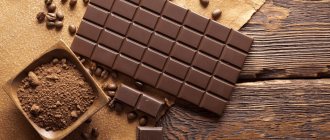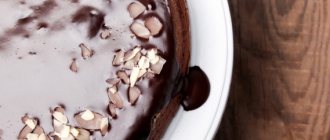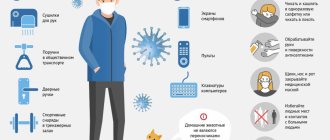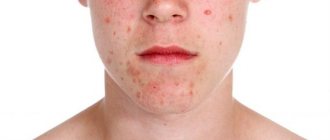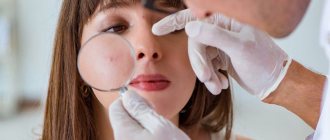Causes of heartburn
The main reason is cardia insufficiency, resulting in incomplete closure of the valve separating the esophagus from the underlying sections of the gastrointestinal tract. Disruption of the cardiac sphincter leads to the reflux of stomach contents into the cavity of the esophagus with irritation of its walls by digestive acids. The problem is called acid reflux. When this process becomes chronic, gastroesophageal reflux disease (GERD) occurs. The main factors in the development of pathology:
- abnormalities in the structure of the sphincter, including hiatal hernia;
- pronounced atony of the gastrointestinal tract muscles - leads to weakness of the locking sphincter, weakens the peristalsis of the stomach and intestines, slows down the evacuation of food from the stomach with the formation of an “acid pocket”. It develops with prolonged exposure to a “crouched” position (incorrect posture, reading while lying on your back, etc.), with a lack of physical activity, as well as with some systemic diseases of connective and muscle tissue. In particular, systemic scleroderma leads to fibrotic degeneration of tissues with atrophy of the muscles of the entire gastrointestinal tract;
- increased pressure in the abdominal cavity - occurs when lifting weights, being overweight, constant constipation, overeating, wearing tight clothes, pregnancy;
- disruption of gastrointestinal secretion and the development of associated pathologies (lack of protective mucus production, excess hydrochloric acid, intense release of bile, etc.) - occurs under the influence of nervous overload, stressful situations, bad habits, as well as the abuse of certain products - spices, chocolate, coffee, sweets, fatty foods, citrus fruits and other sour fruits;
- general digestive disorders due to non-compliance with the diet - love of frequent snacks, eating “on the go” and before bed, poor chewing of food.
Taking certain medications - anesthetics, drugs against hypertension, asthma, antidepressants, antihistamines, sedatives - can completely “turn off” the work of the cardiac sphincter.
On a note! People with obesity (body mass index above 30) are 2 times more likely to suffer from heartburn and related gastrointestinal diseases than people with normal weight (BMI 18-25).
Normally, food crushed in the oral cavity passes through the esophagus and enters the stomach, after which the dividing sphincter closes tightly and prevents its return. Isolated cases of acid reflux during and after meals are considered normal and are called physiological reflux. These phenomena are extremely rare, short in duration and never occur during sleep.
Pathological gastroesophageal reflux is characterized by frequent episodes, manifestations at night and in the supine position, as well as a general increase in the acidity of the stomach contents (from 4.0 pH and below), which leads to visible changes in the mucous membrane of the esophagus.
Heartburn and GERD in general can be a sign of more serious conditions. Among them:
- exacerbation of gastritis with high acidity;
- duodenitis;
- peptic ulcer;
- chronic form of cholecystitis;
- cholelithiasis;
- enzyme deficiency;
- Pernicious anemia is a lack of hemoglobin due to a deficiency of vitamin B12 (cyanocobalamin).
On a note! In rare cases, heartburn is a consequence of hypersensitivity during physiological reflux, when a burning sensation occurs even in the absence of changes in the mucous membrane of the esophagus - with weak acid or non-acid reflux.
The process of heartburn development
The development of heartburn is closely related to the functions of the stomach, since its contents irritate the esophageal mucosa.
Normally, the stomach has an acidic environment due to the content of hydrochloric acid. The task of this substance is to activate enzymes to break down food. Accordingly, the amount of acid increases during eating. In the esophagus, the environment is neutral, and the mucous membrane has no additional protection. The contents of the stomach do not enter the esophagus due to the sphincter that prevents this, which is represented by a muscular ring between the two organs and allows food to pass in only one direction2.
Some reasons contribute to the fact that the sphincter becomes weaker, due to which the contents of the stomach are thrown into the esophagus along with hydrochloric acid. It affects the mucous membrane and causes a chemical burn. At this time, the feeling of heartburn occurs.)
Symptoms of heartburn and its consequences
The main symptoms of heartburn:
- burning in the area of the projection of the stomach and higher up the esophagus;
- feeling of fullness over the epigastrium;
- a feeling of bitterness and acidity in the mouth;
- appetite disorders;
- increased discomfort when bending over and lying down.
Attention! A retrosternal burning sensation may be a sign of serious heart problems. The main difference in differential diagnosis is the time of onset of symptoms: heartburn manifests itself on an empty stomach or immediately after a heavy meal, cardiac reactions are not tied to food intake.
Important! “Harmless” heartburn can cause serious health problems! If it is not eliminated, chronic GERD develops, which over time leads to the development of the following pathologies:
- reflux esophagitis;
- peptic ulcer of the esophagus;
- strictures of the esophagus with a sharp narrowing of its lumen and conduction disturbances - dysphagia;
- precancerous condition of the esophagus (Barrett's esophagus);
- esophageal adenocarcinoma.
Classification
Taking into account the predominant localization of discomfort, a distinction is made between the more common heartburn in the chest and the less common form with a burning sensation in the throat. To determine the severity of a symptom, the frequency and circumstances of its development, intensity, connection with food intake, and other features of the discomfort experienced are usually used. This approach is effective for conducting a diagnostic search and selecting optimal methods for correcting heartburn, taking into account the causes of its occurrence. Based on the proposed criteria, three degrees of severity of the disorder are distinguished:
- Mild heartburn
. A retrosternal burning sensation appears no more than once a month, is usually provoked by dietary errors, and quickly goes away on its own after correcting the diet. May be accompanied by belching of air or acidic stomach contents. It is observed in 51.4% of men and 48.5% of women without chronic pathology of the digestive organs. - Moderate (moderate) heartburn
. Disturbs the patient 1 to 3 times weekly. It is observed after eating both irritating and familiar foods to the patient. It is often detected as part of a dyspeptic syndrome with nausea, sour or putrid belching. Usually indicates the development of gastroenterological pathology. - Severe (severe) heartburn
. It appears almost every day, combined with belching, nausea, sometimes vomiting, stool instability, and abdominal pain. Often associated with food, although it may occur on an empty stomach. Urgent diagnosis is necessary to determine the disease that caused the symptom. Found in 1.2% of men and 3.4% of women.
Diagnostic measures
It is very easy to diagnose the presence of heartburn; it is much more difficult to establish the cause of this pathology. To do this, use a wide range of instrumental techniques:
- X-ray with contrast – records the main disorders of the structure of the esophagus – narrowings, diverticula, hernias;
- radioisotope examination of the esophagus (scintigraphy) – effectively detects hernias, protrusions, tumors;
- MRI of the esophagus, stomach - well reflects the structure of soft tissues, forming a three-dimensional image of the organ, registers the slightest changes in the structure;
- endoscopy of the esophagus, stomach, duodenum, or fibroesophagogastroduodenoscopy (EGD) using a long tube with an optical tip - makes it possible to visually examine the structure of the internal walls and assess the degree of damage, as well as measure the acidity of the contents and take a tissue biopsy;
- esophagomanometry – measurement of the contractile activity of the esophagus, coordination of its peristalsis with the work of higher organs;
- daily pH-metry – 24-hour monitoring of changes in acidity in the upper gastrointestinal tract;
- impedancemetry - study of esophageal peristalsis; carried out using a probe with electrodes that measure the difference in resistance (impedance) as liquids, pieces of food, and gas structures pass through the esophagus;
- Ultrasound of the stomach, duodenum, liver, pancreas - evaluates the structure and functioning of organs in dynamics.
How to get rid of heartburn
It is important to remember that heartburn is just a symptom; it is useless to treat it separately from the cause. At a minimum, cardiac sphincter insufficiency should be corrected to prevent reflux of gastric contents. To do this you need:
- adjust weight;
- change your diet
- increase the tone of the gastrointestinal sphincters.
All this implies a major lifestyle change. The patient is prescribed a course of medications, a therapeutic diet is selected, exercise therapy and moderate physical activity are prescribed.
Drug treatment of heartburn :
- prokinetics – improve motility of the muscles of the gastrointestinal tract;
- proton pump inhibitors - reduce the secretion of hydrochloric acid and reduce the acidity of gastric juice;
- antacid and enveloping drugs – neutralize the effect of acids, create a protective barrier on the surface of the walls of the esophagus;
- antihistamines – eliminate active inflammation in gastritis and ulcers.
A course of therapeutic nutrition is prescribed by a doctor, taking into account the individual characteristics and needs of the body. The diet is based on diets No. 1 and No. 5. Their general principles:
- fractional meals every 2.5 - 3.5 hours;
- the products are crushed and boiled (or steamed);
- the amount of salt, refined sugars, marinades, canned foods, sweets is reduced to a minimum;
- all food is consumed only warm;
- remove from the diet fresh sour vegetables, fruits, berries (apples are eaten baked), cabbage, legumes, mushrooms, baked goods, concentrated meat and fish broths, carbonated and strong drinks;
- increase the consumption of dairy products, eggs, lean meat and fish, vegetable oils, boiled vegetables (potatoes, carrots, beets, pumpkin, zucchini, etc.), buckwheat, semolina, rice cereals;
- Jelly and compotes made from fruits and berries (rose hips, currants, rowan berries, etc.), as well as herbal teas, are used as drinks.
When creating a menu, you should take into account the body’s need for vitamins and minerals - food should not be monotonous.
Physical therapy is an important part of therapy for heartburn and GERD. It helps strengthen muscle walls, stabilize the sphincter and significantly speed up the patient’s recovery. Features:
- training is carried out only on an empty stomach;
- Excessive loads and intense exercises – running, aerobics – are contraindicated;
- preference is given to calm exercises in which the body maintains an even position - yoga, race walking, skating, cycling;
- Training in a lying position is undesirable.
During exercise, you should monitor the replenishment of fluid in the body.
The practice of breathing exercises deserves special attention. When performed correctly, it reduces the pain of symptoms, reduces intra-abdominal pressure and stimulates peristalsis.
Surgery
In advanced cases, when scarring of ulcers and erosions of the esophagus leads to the formation of strictures and narrowing of the lumen, surgical intervention is resorted to. Both invasive and modern minimally invasive techniques are used. The majority of manipulations are performed under endoscope control without tissue incision. Techniques:
- injections of volume-forming drugs into the sphincter area to narrow the natural lumen;
- expansion of the esophagus with hydrogel implants simulating living tissue;
- endoluminal gastroplasty with the formation of additional folds that limit the opening of the sphincter;
- laparoscopic fundoplication – the formation of a reinforcing “cuff” around the lower part of the esophagus from the patient’s own tissues;
- radiofrequency ablation – artificial microscarring of the walls of the esophagus to eliminate narrowing of the lumen due to tissue damage;
- installation of a magnetic device to restore the closing function of the sphincter.
Prevention
To avoid heartburn, you should carefully take care of the health of your entire digestive system. Anyone who is predisposed to high stomach acidity should adhere to the following rules:
- Adjust your diet - do not overeat, give up harmful acid-forming foods - refined sweets, fried foods, smoked foods, marinades, hot and spicy dishes. The last meal should be 4 hours before going to bed.
- Adjust the body's water balance - drink 1.5-2.5 liters of pure still water per day.
- Maintain correct posture - in a “crouched” position, the stomach is compressed and the cardiac valve automatically opens slightly.
- Watch your weight - it should not go beyond the norm, otherwise the likelihood of heartburn increases many times over.
- Get rid of bad habits - quit smoking, limit your alcohol consumption.
- Take medications strictly according to indications, following the dosage and rules of administration.
- Avoid sudden physical activity.
- Try not to tighten the epigastric area with tight, tight clothing and belts.
Tips for heartburn
If the problem cannot be avoided, it is necessary to undergo a clinical examination as soon as possible to identify the cause of the pathology - perhaps everything is much more serious than you think. To temporarily eliminate or smooth out unpleasant symptoms, you can use the following tips:
- drink more water - it will dilute gastric juices, reduce acidity levels and reduce irritation of the mucous walls;
- if there is constant irritation, use antacid and enveloping drugs - they will protect the mucous membranes of the esophagus and sphincter from the action of acids;
- as a last resort, use antifoam drugs to reduce gas formation in the stomach and severe acid reflux with belching;
- review your diet and eliminate all irritating ingredients - spices, marinades, sour fruits, fried foods, limit the amount of sweets, coffee, alcohol;
- Raise the head of your bed by 10-15 cm - this will avoid severe reflux during sleep.
Should you use baking soda? Soda is a component of many pharmaceutical antifoam products and is the main remedy for heartburn at home. The chemical reaction of soda with the contents of the stomach really helps to neutralize high acidity. Due to the reaction of acid + alkali, water, sodium salt and carbon dioxide are formed that are harmless to the body. However, this remedy is only a temporary measure - with prolonged use, carbon dioxide begins to irritate the inner walls of the stomach, provoking it to more actively produce hydrochloric acid.
An alternative to soda solution are mild antacids and alginates or herbal infusion. Flaxseed, chamomile flowers, St. John's wort, and plantain seeds have a pronounced therapeutic effect.
Conclusion
Self-medication can be practiced for mild, rare symptoms. For this purpose, drugs from the group of antacids and alginates are used, and a single dose of Ranitidine 75 mg is also possible. If heartburn bothers you more than once a week , you need to consult a doctor . Taking medications should not be uncontrolled. Self-administration should not last longer than 7-10 days. Otherwise, you may not notice other serious diseases in time, one of the symptoms of which may be heartburn.



